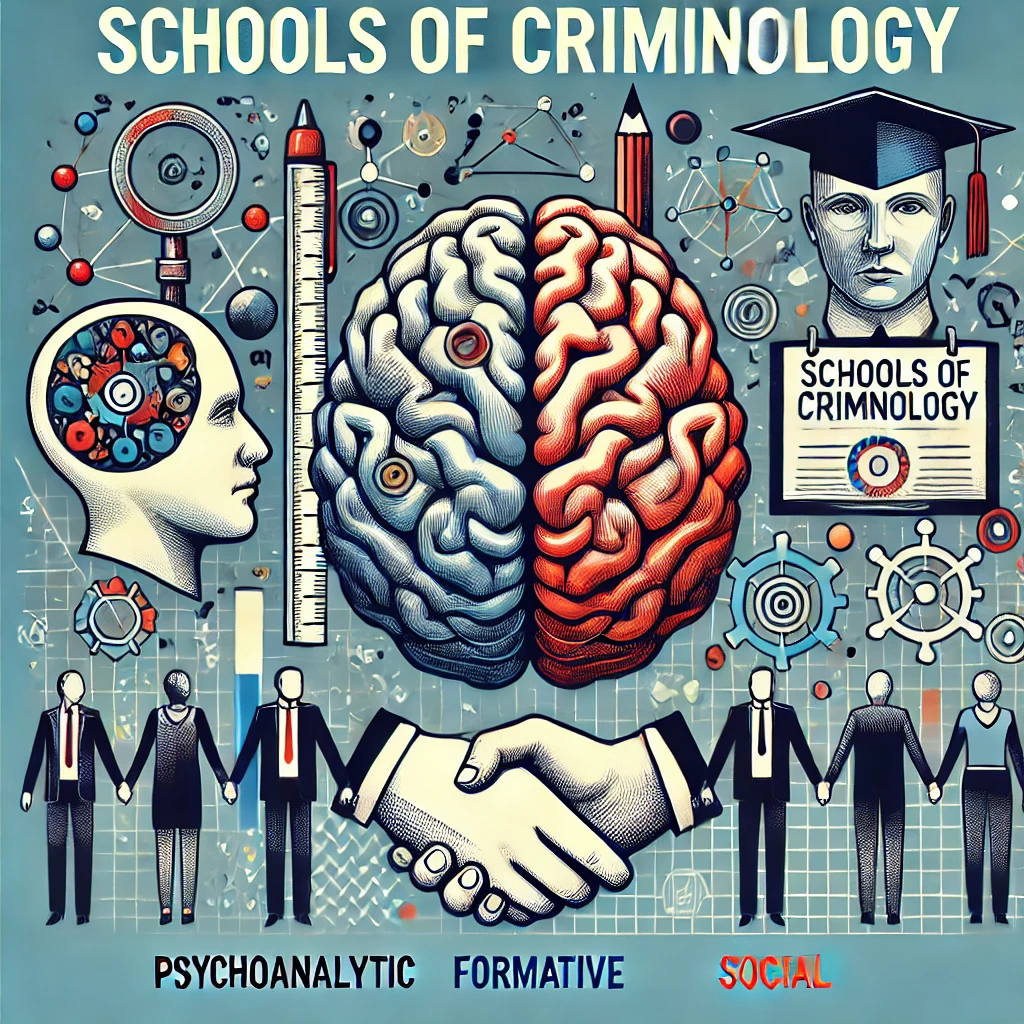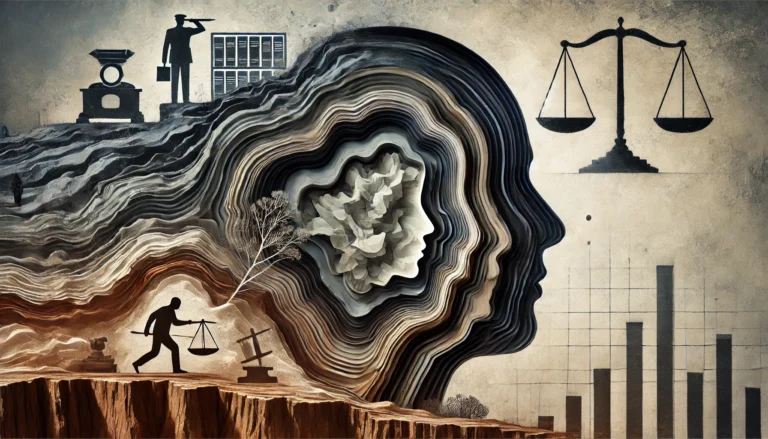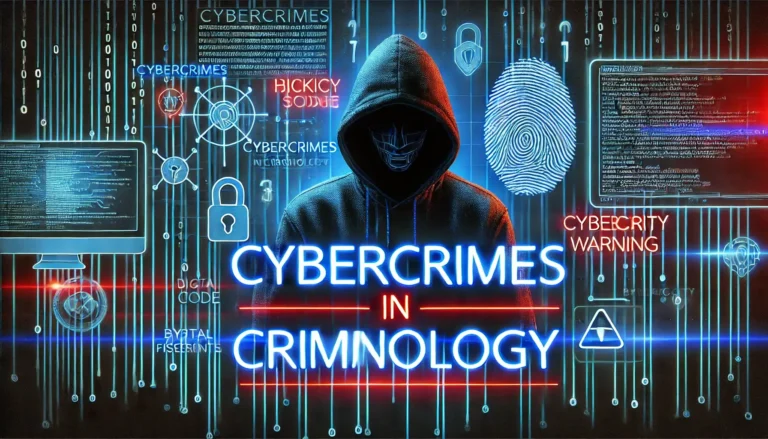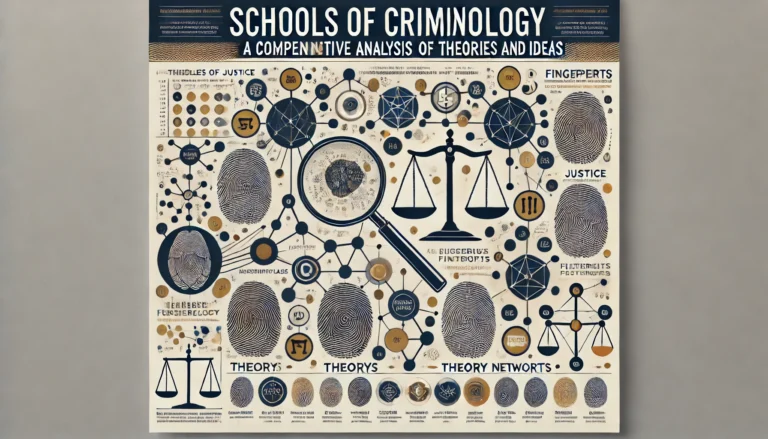Criminology schools | Psychoanalytic, formative, and social school
Introduction
Criminology is a vital tool for understanding and interpreting criminal behavior through scientific methods. One of the most effective approaches in this field is its classification into various schools of thought, each offering unique perspectives on crime. These schools provide analyses ranging from biological factors focusing on genetics and physical traits to psychological theories that delve into an individual’s internal conflicts, and finally to social explanations emphasizing the role of environment and community.
This article sheds light on three major schools of criminology: the Biological School, the Psychoanalytic School, and the Social School. By exploring their core ideas, contributions, and criticisms, this analysis offers a deeper understanding of how these theories have evolved and what they bring to contemporary criminological studies.
Section One: The Biological School
Origins and Definition
The Biological School emerged in the 19th century, pioneered by Italian scientist CESAR LOMBROSO, regarded as the father of modern criminology. LOMBROSO believed that crime was not a matter of free choice but was instead influenced by biological and genetic factors predisposing some individuals to criminal behavior. His theories were based on field studies conducted on prisoners, where he observed distinct physical traits among criminals, such as cranial shapes and facial features.
Key Ideas
- The Born Criminal: LOMBROSO posited that some individuals are biologically predisposed to criminality, making them inherently different from non-criminals.
- Physical Traits: He associated features like prominent jaws, thick eyebrows, or large ears with a propensity for crime.
- Genetic Factors: Later studies expanded on his ideas, investigating the role of heredity in influencing criminal behavior.
Applications and Criticisms
- Applications:
- The school contributed to advancements in forensic medicine and post-mortem analyses to determine causes of crime.
- It provided insights into individual-focused approaches to dealing with offenders.
- Criticisms:
- Lombroso’s theory faced criticism for its lack of scientific rigor.
- It was considered biased, as it linked physical traits to criminality, raising concerns about racial prejudice.
Relevance of the Biological School in Modern Criminology Schools
Today, many Criminology schools continue to explore and refine biological explanations of crime, especially with advancements in neuroscience and genetics. For example, researchers investigate how brain abnormalities or hormonal imbalances may contribute to aggression or impulsivity. Although modern scholars have distanced themselves from Lombroso’s physical trait theories, they have expanded on his foundational ideas by incorporating modern diagnostic tools like brain imaging and genetic mapping. These contributions ensure that the biological perspective remains a critical component in contemporary criminological curricula.
Section Two: The Psychoanalytic School
Origins and Definition
The Psychoanalytic School was founded by Austrian psychoanalyst Sigmund Freud, who suggested that criminal behavior could be understood by analyzing an individual’s internal psychological conflicts. Freud emphasized the importance of the unconscious mind and early childhood experiences in shaping a person’s character, including their inclination toward crime.
Key Ideas
- Internal Conflicts: Crime results from a struggle between the id (basic instincts), the superego (moral conscience), and the ego (rational self).
- Childhood Experiences: Traumatic events or negative experiences during childhood can lead to deviant behavior.
- Defense Mechanisms: Individuals may use mechanisms like denial or projection to justify criminal actions.
Applications and Criticisms
- Applications:
- Development of psychotherapy techniques tailored for offenders.
- Better understanding of criminal motives from emotional and psychological perspectives.
- Criticisms:
- Freud’s theories are often difficult to verify scientifically.
- The school overlooks social and biological factors in explaining crime.
Integration into Criminology Schools and Psychological Training
In current Criminology schools, the psychoanalytic approach is often studied as part of broader psychological theories related to criminal behavior. Courses frequently emphasize the importance of understanding an offender’s mental health history and inner psychological struggles. This school of thought is particularly influential in correctional psychology, where therapists and criminal justice professionals are trained to assess unconscious motivations behind criminal acts. As mental health becomes a greater focus in justice systems worldwide, psychoanalytic principles gain renewed relevance in shaping therapeutic and rehabilitative approaches.

Section Three: The Social School
Origins and Definition
The Social School emerged alongside the development of sociology, with significant contributions from thinkers like Emile Durkheim, who viewed crime as a social phenomenon stemming from economic, social, and cultural factors.
Key Ideas
- Social Disintegration: Crime arises from societal imbalances, such as unemployment or poverty.
- Structural Strain: Scholars like Robert Merton argued that crime occurs when individuals are unable to achieve legitimate goals through lawful means.
- Environmental Influence: The school examines how factors like living in impoverished neighborhoods or crowded urban areas increase crime rates.
Applications and Criticisms
- Applications:
- Designing crime policies focused on improving social conditions.
- Implementing rehabilitation programs emphasizing education and employment.
- Criticisms:
- The school neglects individual and biological factors.
- Its ideas are sometimes generalized without considering cultural differences.
Influence on Policy and Education in Criminology Schools
The Social School’s emphasis on structural and environmental causes of crime continues to shape how Criminology schools prepare students for careers in criminal justice, policymaking, and social work. Curricula often include community-based crime prevention strategies, emphasizing how systemic inequality, poor housing, and lack of access to education can drive criminal behavior. Furthermore, students are trained to critically assess how different social systems interact and affect crime rates. This school remains instrumental in promoting a socially conscious approach to crime reduction, especially in marginalized communities.
Conclusion
The schools of criminology offer diverse and complementary insights into understanding crime. The Biological School emphasizes genetic and physical traits, the Psychoanalytic School highlights psychological factors, and the Social School focuses on societal and environmental influences.
A comprehensive understanding of crime requires integrating these perspectives to develop more effective crime prevention and rehabilitation strategies. The challenge for researchers lies in combining these theories to achieve a holistic and accurate view of criminal behavior.
Modern Criminology schools encourage a multidisciplinary approach that combines the insights of biological, psychoanalytic, and social perspectives. This integrated view allows future criminologists to develop a nuanced understanding of crime, leading to more effective interventions and policies. As crime evolves in complexity, so too must the tools and frameworks used to study it—making these schools of thought ever more valuable in both academic and practical settings.







